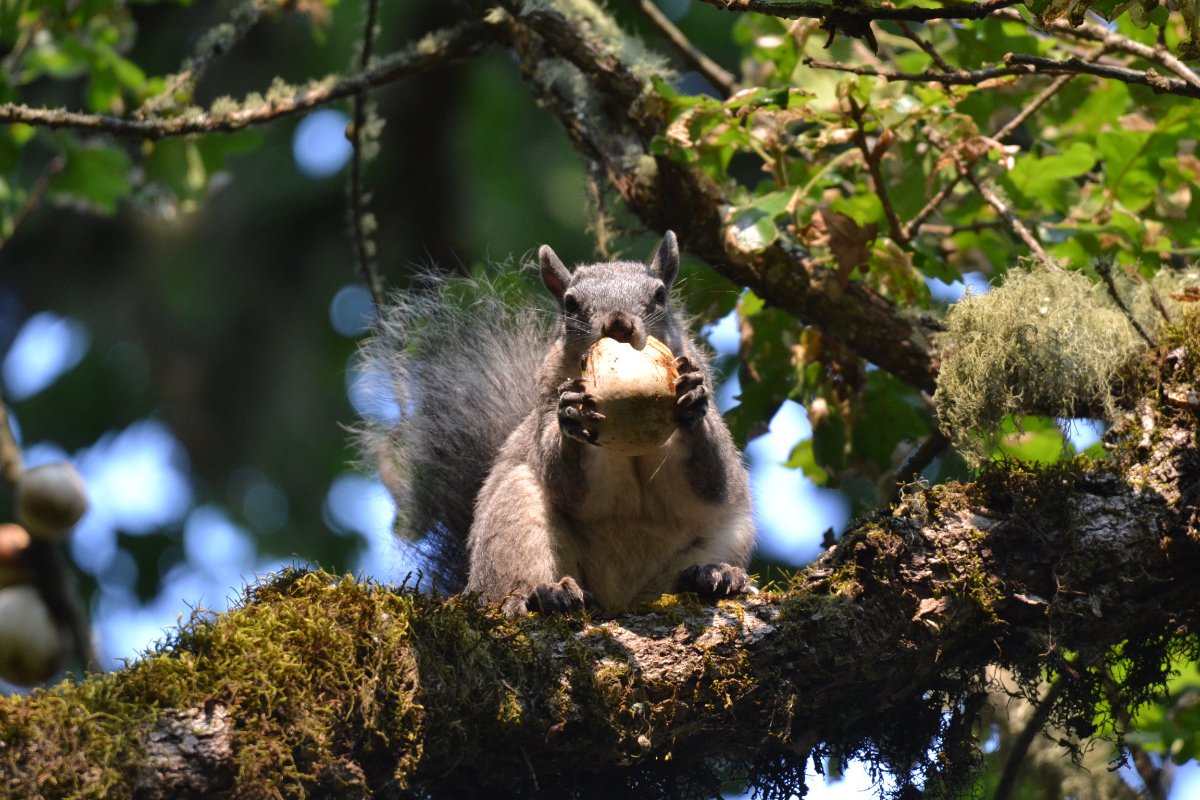The last post showed the vibrant green growth of new leaves as spring unfolds. On the other hand, within this same landscape, some plants’ new leaves begin as red—poison oak, Oregon white oak, and Oregon grape.
Check out this article I found online from Henderson State University:
Green Leaves Often Start and End as Red Leaves
The green coloration in the leaves of most plants is due to the presence of chlorophyll, a pigment used to absorb energy from the sun. Wavelengths of light from the visible spectrum (sometimes seen on rainy days as a "rainbow") are absorbed by the chlorophyll, with the exception of the green wavelengths, which are reflected. Young and old leaves very often are red, however. It is curious as to why some leaves begin development with red coloration, become green after they are largely grown, then return to red as they die.
The delayed greening has been studied as an adaptive strategy for the plant. One line of thought is that the young leaves are not yet performing photosynthesis, so they are not capturing energy from the sun and making food, therefore they are without much nutritive value to the plant. There also is little nutritive value to an herbivore. The plant is investing energy to grow the new leaf, so avoidance of herbivory allows the investment a better chance to mature. If being red decreases the risk that the new growth will be eaten by herbivorous animals, then the plant has used a successful strategy. Those species that delay greening have reddish leaves due to a chemical known as anthocyanin. This chemical appears reddish under more acid conditions and more bluish under basic conditions. Because most tissues are acid, the red color typically shows.
The optical properties of the anthocyanins have been studied most recently. Most invertebrate herbivores, such as insects, can detect colors in the blue range but not in the red range of the spectrum. Also, most mammals, with the exception of primates, essentially are blind to color in the yellow to red range, so perceive those colors as shades of gray. Red leaves would be perceived by leaf predators as somewhat dark and maybe dead, and therefore not a choice food material. Perhaps the red of new leaves, then, allows the plant to hide them by making them cryptic or unattractive to the herbivores that would otherwise eat them as they grow.
When the growing season is over, leaves become red or yellow as the chlorophyll begins to disappear due to shorter days and cooler weather. Red in dying leaves is due to the same pigment--anthocyanin--that made the young leaves red, but yellow coloration is caused by carotene. These fall colors can be therapeutic to humans due to the relaxing effect of the colors. However, the colors already were present; they were just hidden by the green chlorophyll for most of the year. Thus, as leaves of some deciduous plants begin to shed, they may return to the red color they had at the beginning of their life.
Link to website article:
Green Leaves Often Start and End as Red Leaves









































































